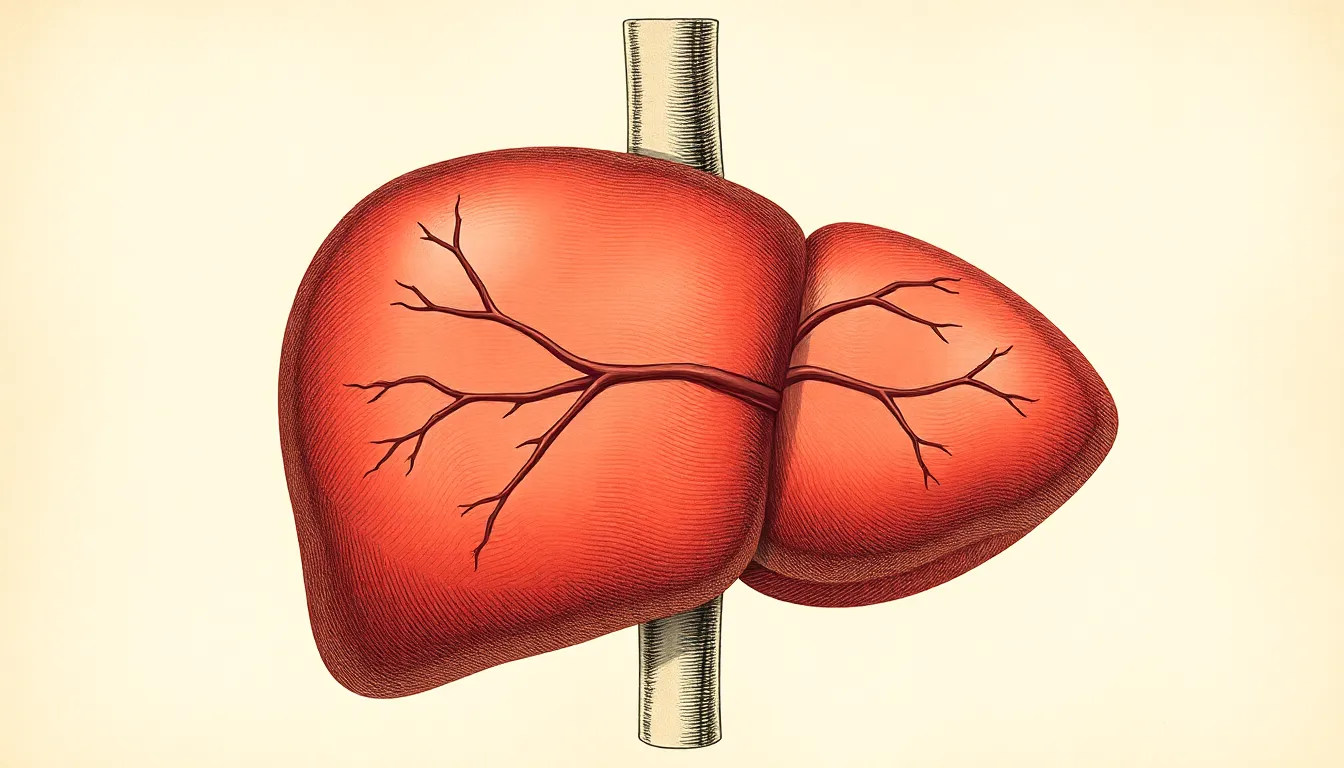When it comes to the human body, most people can rattle off a list of organs without breaking a sweat. Heart? Check. Lungs? Check. But what about the liver? Spoiler alert: there’s only one. Yes, folks, despite what some might think after a wild night out, humans are equipped with just a single liver. This multitasking marvel works tirelessly to detoxify, produce bile, and even help with digestion—all while being the unsung hero of the body.
Table of Contents
ToggleUnderstanding the Liver
Humans possess one liver, a key organ essential for various bodily functions. This organ plays a crucial role in maintaining health and well-being.
Anatomy of the Liver
The liver sits in the upper right abdomen, beneath the diaphragm. It has four distinct lobes, with the right lobe being the largest. This organ is reddish-brown and weighs about 3 pounds in adults. Blood flows in through the hepatic artery and portal vein, providing nutrients and oxygen. The liver structure includes specialized cells called hepatocytes, which handle metabolic processes. Bile ducts play an important role in transporting bile, produced by liver cells, to the gallbladder.
Functions of the Liver
Detoxification occurs as the liver processes toxins and metabolic waste. Bile production represents another key function, aiding in fat digestion. Additionally, the liver regulates blood sugar levels by storing glucose as glycogen. Protein synthesis occurs through the production of important proteins, such as albumin and clotting factors. Storage of vitamins and minerals ensures the body has readily available nutrients. Overall, the liver plays an indispensable role in numerous critical processes.
Common Misconceptions

Misunderstandings about the liver often arise due to its complex functions. One common myth suggests that humans can possess more than one liver. This idea is inaccurate; an adult human has only one liver.
Do Humans Have More Than One Liver?
Humans do not have more than one liver. The body’s unique design includes just a single organ, which performs numerous essential functions. When people drink excessively, they may believe their body gets a new liver, but that’s not the case. Instead, the existing liver works harder to detoxify the system and recover. Understanding the liver’s sole presence helps dispel myths and encourages better health practices.
Importance of Understanding Liver Health
Recognizing liver health holds significant value for overall well-being. The liver maintains crucial functions, such as detoxification, metabolism, and nutrient storage. An unhealthy liver can lead to severe issues, including fatty liver disease and hepatitis. Knowing how to care for the liver can prevent long-term damage. Healthier lifestyle choices, such as balanced diets and moderate alcohol consumption, directly impact liver function. Increasing awareness fosters better decision-making regarding liver health, ensuring its vital role in bodily processes remains supported.
Medical Insights
Liver health significantly affects overall well-being. Understanding liver diseases provides clarity on how various conditions impact functionality.
Liver Diseases and Disorders
Chronic conditions like hepatitis inflammation occur due to viral infections. Non-alcoholic fatty liver disease results from obesity and poor diet, leading to fat accumulation. Cirrhosis, marked by extensive scarring, can stem from excessive alcohol consumption or chronic hepatitis. These disorders threaten liver functions, prompting urgent medical attention. Preventative measures include maintaining a healthy weight and managing diabetes, which contribute to reduced risks associated with liver diseases. Early detection ensures better outcomes with timely interventions.
Signs of Liver Dysfunction
Symptoms like jaundice signal potential liver dysfunction. Fatigue and weakness frequently accompany liver disorders, affecting daily activities. Swelling in the abdomen or legs often occurs due to fluid buildup, indicating underlying issues. Dark urine or pale stools can also reveal liver problems, showing changes in bile production. Frequent nausea or loss of appetite may arise alongside these symptoms. Being aware of these signs can promote early consultation with healthcare professionals, ensuring prompt evaluation and treatment.
Understanding the liver’s unique role in the human body is essential for maintaining overall health. With only one liver to rely on, it’s crucial to appreciate its functions in detoxification, digestion, and metabolism. Misconceptions about having multiple livers can lead to neglecting its care and health.
By adopting healthier lifestyle choices and staying informed about liver health, individuals can support this vital organ. Recognizing the signs of liver dysfunction and seeking timely medical advice can prevent serious complications. Prioritizing liver care not only enhances well-being but also fosters a better quality of life.



